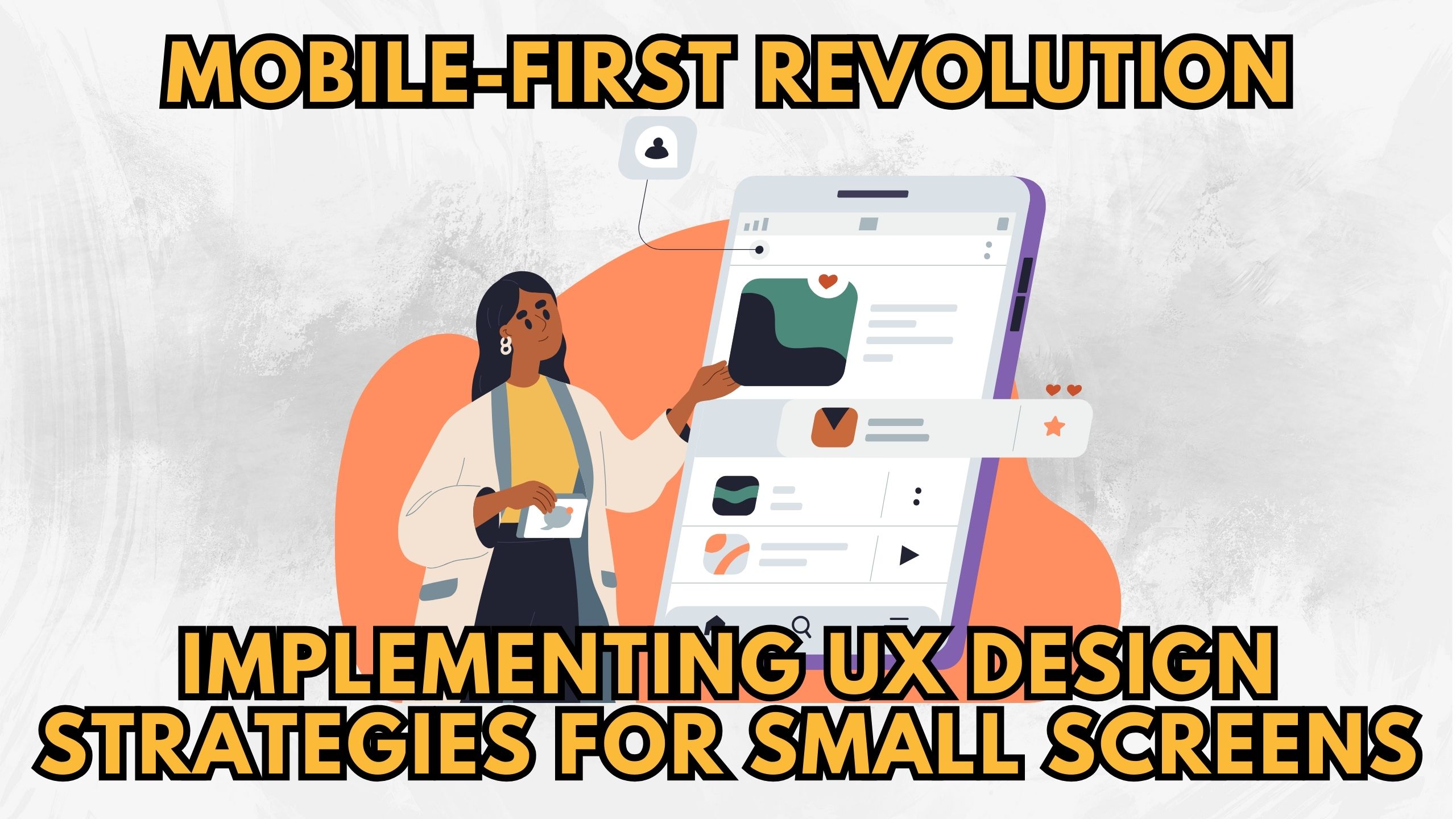Mobile-First Revolution: Implementing UX Design Strategies for Small Screens


Mobile-First Revolution: Implementing UX Design Strategies for Small Screens
In the age of smartphones and tablets, the mobile-first approach to User Experience (UX) design has become not just a trend but a necessity. In this blog post, we’ll explore the essential strategies for designing a seamless user experience on small screens, and how embracing this mobile-first revolution can benefit your digital products.
Understanding the Mobile-First Paradigm
The mobile-first paradigm involves prioritizing the design and development of a website or application for mobile devices before addressing larger screens. This approach ensures that the user experience is optimized for the constraints and capabilities of small screens, leading to more efficient and user-friendly designs.
By adopting a mobile-first mindset, businesses can tap into the growing population of mobile users, providing them with a tailored and intuitive experience. With mobile devices becoming the primary means of accessing digital content, prioritizing mobile design is crucial for staying relevant in the digital landscape.
Responsive Design for Cross-Device Consistency
Responsive design is a key component of mobile-first strategies. It involves creating designs that automatically adjust to different screen sizes, maintaining a consistent and user-friendly experience across various devices. This adaptability is vital for ensuring that users receive a seamless experience whether they access your website or application on a smartphone, tablet, or desktop.
Embracing responsive design not only enhances user satisfaction but also contributes to improved search engine rankings. Google, for instance, prioritizes mobile-friendly websites in its search results, making responsive design a crucial element for SEO success.
Streamlined Navigation and Minimalism
Small screens demand simplicity in design and navigation. Mobile-first UX design emphasizes the importance of streamlined interfaces, concise content, and intuitive navigation. By minimizing clutter and prioritizing essential elements, you create an environment where users can easily find what they need without being overwhelmed by unnecessary information.
Consider incorporating mobile-friendly navigation patterns such as hamburger menus and swipe gestures. These elements optimize screen space, enhancing the overall usability of your mobile interface.
Touch-Friendly Interactions and Gestures
Mobile devices rely on touch-based interactions, and mobile-first design takes full advantage of this. Designing with touch-friendly elements and gestures in mind ensures that users can interact with your app or website effortlessly. This includes appropriately sized buttons, swipe actions, and gestures that are natural and intuitive for mobile users.
Prioritizing touch-friendly interactions not only improves usability but also contributes to a positive user perception of your brand. A seamless and enjoyable mobile experience can lead to increased user engagement and loyalty.
Testing and Iteration for Optimization
The mobile-first design process is iterative and involves continuous testing and refinement. Regularly testing your designs on actual mobile devices allows you to identify and address issues specific to small screens. User feedback and analytics play a crucial role in understanding how your audience interacts with your mobile interface, guiding further optimizations.
By embracing a culture of testing and iteration, you ensure that your mobile UX design evolves to meet the changing needs and expectations of your users.
Relevant SaaS Products:
- Figma: Figma is a collaborative design tool that supports mobile-first design workflows. Its cloud-based platform enables teams to create, prototype, and test designs collaboratively, fostering an iterative approach to mobile UX design.
- InVision: InVision is a versatile prototyping tool that facilitates the creation of interactive and mobile-responsive designs. Its real-time collaboration features make it an ideal choice for teams working on mobile-first projects.
- UserTesting: UserTesting allows you to gather feedback on your mobile designs through real user testing. This SaaS product provides valuable insights into how users interact with your mobile interface, guiding iterative improvements.
- Optimal Workshop: Optimal Workshop offers tools for usability testing and information architecture, essential for refining the navigation and structure of your mobile-first designs.
- Lookback: Lookback is a user research platform that supports remote usability testing, interviews, and surveys. It’s a valuable tool for gathering user feedback on your mobile UX designs.
In conclusion, the mobile-first revolution is not just a design trend but a strategic approach to meeting the needs of an increasingly mobile-centric audience. By prioritizing mobile UX design strategies such as responsive design, streamlined navigation, touch-friendly interactions, and continuous testing, businesses can create digital experiences that resonate with users on small screens.
Unlock Mobile-First Excellence with Subscribed.fyi
Elevate your SaaS stack management with Subscribed.fyi, the go-to solution for freelancers and small teams seeking to understand, compare, and optimize their software subscriptions.
Unlock Secret Deals and Save Big: Sign up for free today to access exclusive member-only deals on 100+ SaaS tools, resulting in savings of $100,000+ per year. Explore your secret deals at Subscribed.fyi Deals.
Relevant Links:











